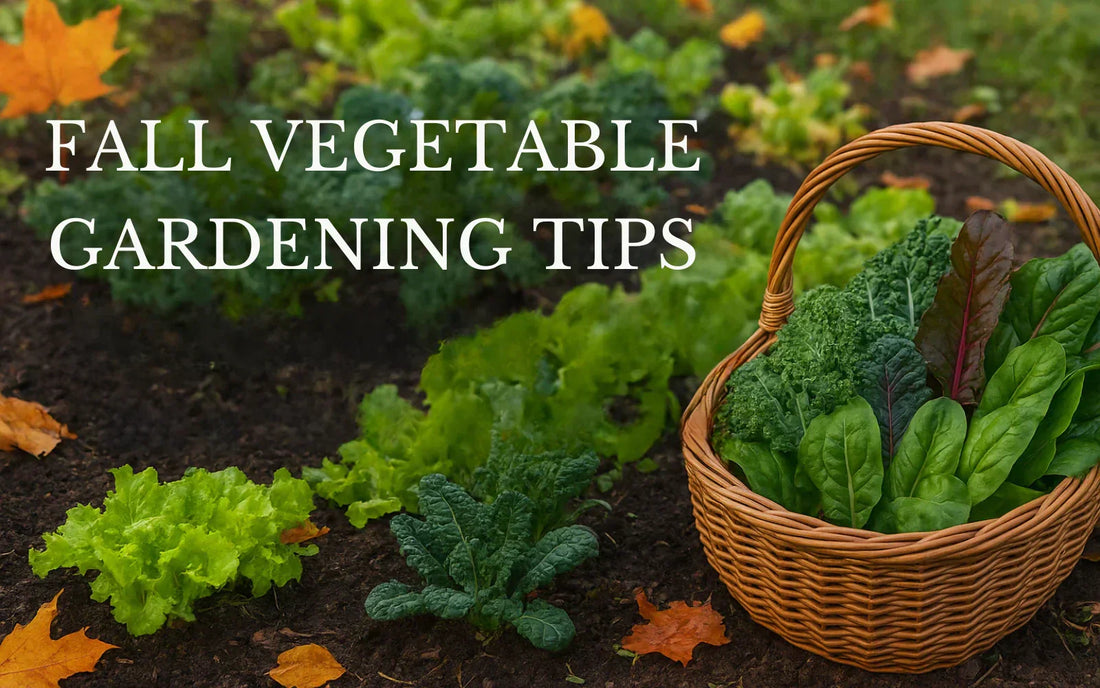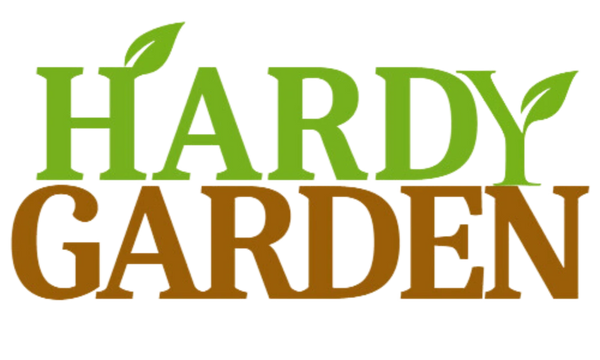
Fall Vegetable Gardening Tips for a Thriving Harvest
Share
Fall gardening is one of the most rewarding ways to extend your growing season. With cooler temperatures, fewer pests, and the right planting strategies, your vegetable garden can keep producing long after summer ends. In this guide, we’ll share simple and effective fall vegetable gardening tips to help you know when to plant, which vegetables thrive in fall, and how to make your fall garden a success.
Why Fall Gardening is Worth It
-
Cooler Temperatures Mean Happier Plants
Many vegetables—like leafy greens, carrots, and broccoli—prefer cooler soil and air. They grow more steadily in the fall without the stress of summer heat. -
Fewer Pests and Weeds
Insects that trouble summer crops, such as squash bugs and tomato hornworms, decline as temperatures drop. Likewise, weed growth slows, giving your vegetables more room to thrive. -
Better Flavor and Nutrition
Certain crops taste sweeter after a touch of frost. Carrots, kale, and Brussels sprouts convert starches into sugars in cooler weather, making them more flavorful and nutrient-dense. -
Extended Harvest Season
By planting in late summer for fall, you can continue harvesting fresh vegetables in October—or even later if you use frost protection like row covers or cold frames. -
Healthier Soil for Next Season
Fall planting keeps your soil active and alive especially if you adopt crop rotation. With the help of soil enhancers and compost, your garden bed will be in top shape for spring.

When to Plant Your Fall Vegetable Garden
Know Your First Frost Date
Check your local frost calendar or use your ZIP code in an online frost date calculator. This gives you an estimated “deadline” for when your crops need to be mature.
Count Backward
Look at the “days to maturity” on your seed packet, then count back that number of days from your first expected frost date. Add an extra week or two as a buffer for slower fall growth.
Example: If your frost date is October 20 and you’re planting broccoli (which takes about 60–70 days), you’ll want to start seeds indoors around late July to early August.
Direct Sowing vs. Transplanting
- Start indoors in midsummer: Broccoli, cauliflower, cabbage, and Brussels sprouts do best when started early and transplanted.
- Direct sow in late summer to early fall: Lettuce, spinach, carrots, radishes, and turnips grow quickly and can be sown directly in the garden.

Preparing and Caring for a Fall Vegetable Garden
Planting a fall vegetable garden is simpler than many gardeners realize. The key is preparation, timing, and giving your plants the right environment to thrive. Follow these steps for a successful fall harvest:
1. Prepare Your Garden Beds or Planters
Start your fall garden by clearing out summer crops—remove spent plants, weeds, and debris to make room for new growth. Then, enrich your soil with compost or a natural booster like Hardy Garden’s Nature’s Perfect Soil Enhancer. This step replenishes nutrients lost during summer harvests, ensuring healthier plants, faster growth, and higher yields.
If space is limited or you want flexibility, consider using pots or grow bags. They make it easy to control soil quality, improve drainage, and move plants to sunnier or more protected spots as the weather shifts. Plus, grow bags encourage stronger root systems by preventing plants from becoming root-bound.
2. Plan Your Crops
Choose vegetables that thrive in cooler temperatures such as spinach, kale, lettuce, carrots, radishes, broccoli, and beets. Check seed packets for days to maturity and work backward from your area’s first frost date.
3. Start Seeds or Transplant
- Start Indoors: Begin cool-weather crops like broccoli, cauliflower, cabbage, and Brussels sprouts indoors. To speed up germination, use a seed heating mat for consistent warmth.
- Direct Sow Outdoors (Late Summer–Early Fall): Plant fast-growing crops such as lettuce, spinach, carrots, radishes, turnips, and peas directly in the garden. These thrive when sown right into the soil and can handle cooler temperatures.
4. Use Mulch to Protect Soil
Spread mulch (straw, shredded leaves, or wood chips) to retain warmth, prevent weeds, and protect roots from early chills.

5. Water Consistently
Cooler weather means less evaporation, but your garden still needs about 1 inch of water per week. Water deeply at the base of plants to encourage strong root growth.
6. Protect from Frost
Install row covers, cold frames, or garden fabric before the frost threatens. These extend your harvest season by keeping plants insulated while still letting sunlight through.
Quick Tip: Succession planting every 1–2 weeks with fast growers like spinach and radishes will keep your garden producing right up until the first hard frost.
Vegetables That Thrive in Fall
One of the best parts of fall gardening is choosing vegetables that actually prefer cooler temperatures. Here are some of the top vegetables to plant in your fall garden:
1. Leafy Greens
- Spinach, kale, lettuce, Swiss chard, and arugula thrive in the cool soil of fall.
- Many greens become sweeter after a light frost, making them perfect for crisp autumn salads.
2. Root Vegetables
- Carrots, radishes, beets, and turnips are excellent fall crops.
- A touch of frost encourages these vegetables to convert starches into sugars, improving flavor.
3. Brassicas (Cole Crops)
- Broccoli, cauliflower, Brussels sprouts, and cabbage love the cool, steady temperatures of fall.
- These nutrient-rich vegetables often perform better in autumn than in hot summer conditions.
4. Cool-Season Staples
- Peas, onions, and garlic can be planted in late summer or early fall.
- Garlic especially benefits from a fall planting, developing strong bulbs for the next season.

Choose fast-maturing varieties if planting later in the season. For example, baby carrots and small radish varieties can be ready in as little as 25–30 days.
Essential for a Successful Fall Garden
Having the right tools makes fall gardening easier and more productive. Here’s what every gardener should keep on hand:
- Garden Gloves – Protect your hands from chilly weather, soil, and thorns.
- Pruning Shears – Keep plants healthy by trimming away dead or damaged growth.
- Garden Hoe or Hand Trowel – Ideal for planting seeds, loosening soil, and quick weeding.
- Watering Can or Hose with Nozzle – Fall crops still need steady, consistent moisture.
- Mulch or Straw – Retains soil warmth, locks in moisture, and reduces weed growth.
- Frost Covers or Row Covers – Extend your harvest by shielding plants from sudden frosts.
- Soil Enhancer – Restore nutrients for stronger, healthier crops throughout the season.
- Grow Bags or Movable Planters – Flexible and portable, perfect for small spaces or moving plants to sunnier spots as days shorten.
- Leaf Rake – Essential for clearing fallen leaves and debris, keeping garden beds clean and preventing pests.
- Compost Bin – Turn garden waste and kitchen scraps into nutrient-rich compost to naturally feed your soil year-round.

Conclusion
Fall gardening is not just an extension of summer—it’s an opportunity to grow fresh, flavorful vegetables in a season many gardeners overlook. By following these simple and effective fall vegetable gardening tips, you can enjoy a thriving harvest well into the cooler months.
Whether you’re planting leafy greens, root crops, or hardy brassicas, remember that preparation and timing are key. With a little planning, your fall garden can be just as abundant—if not more—than your summer one.
